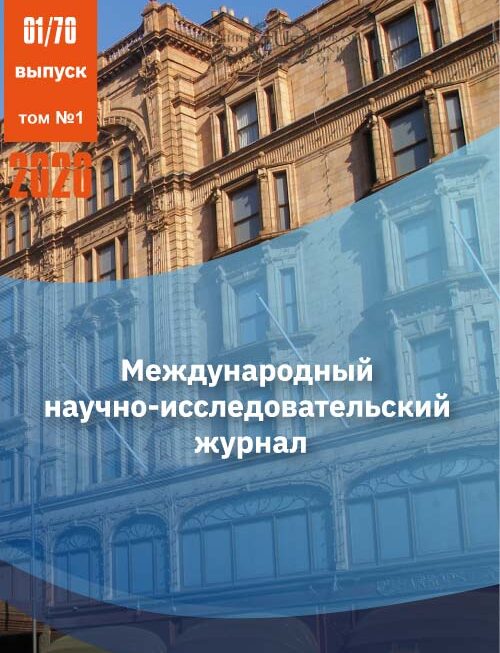OPTIMIZATION OF NIOBIUM CONTENT FOR INCREASED WEAR RESISTANCE GAS-THEMIC COATINGS
Abstract
In this work, the compositions of the charge of experimental flux-cored wires for the technology of electric arc metallization are developed. As modifying additives selected powders of niobium Nb content in the charge flux-cored wire is 0,1%, 0,3%, 1% and 5% by weight.X-ray spectral analysis and scanning scanning electron microscopy studied the composition and structure of wear-resistant coatings.
Tribological studies have shown that the wear of the samples is reduced by an order of magnitude, starting with the addition of 0.3% niobium. When the content of niobium powder wire 1% and 5% wear resistance remains high, but the mass loss of samples and counterbody are balanced, due to the grinding of the microstructure and increased uniformity of the micromechanical properties.
References
Rio T. Gomez-del, M.A. Garrido, I.E. Fernandez, et al.//J. of Materials Processing Technology.-2008. Vol. 204/Is1-3 p 304-312 2. K. Gurumoorthy, M.Kamaraj,Rao K. Prasad, et. Al.//Microstrutural aspects of plasma trausferred arc surfaced Ni- baced hardfacing alloy//Material Science and Endgineering: A.-2007.-Vol. 456.-p 11-19
Анциферов В.Н. Порошковое материаловедение.- Екатеринбург, УрО РАН, 2012.-456 с.
Винокуров Г.Г., Стручков Н.Ф., Лебедев Д.И., Попов О.Н. Взаимосвязь микрогеометрии поверхности трения и макроструктуры износостойких порошковых покрытий // Упрочняющие технологии и покрытия. 2014. №9. С.17-21.
Гаркунов Д.Н. Триботехника (конструирование, изготовление и эксплуатация машин): Учебник.-М.: Изд-во МСХА, 2002.-632 с.
Крагельский И.В., Добычин М.Н., Комбалов В.С. Основы расчетов на трение и износ. М.: Машиностроение, 1977. 526 с.
Орыщенко А.С. Жаростойкие жаропрочные сплавы.-СПб.:Наука, 2011.-191 с.
CC BY-ND
A work licensed in this way allows the following:
1. The freedom to use and perform the work: The licensee must be allowed to make any use, private or public, of the work.
2. The freedom to study the work and apply the information: The licensee must be allowed to examine the work and to use the knowledge gained from the work in any way. The license may not, for example, restrict "reverse engineering."
2. The freedom to redistribute copies: Copies may be sold, swapped or given away for free, in the same form as the original.







